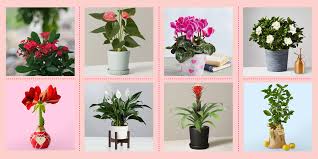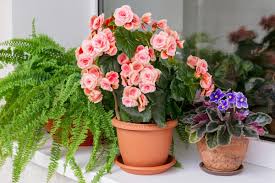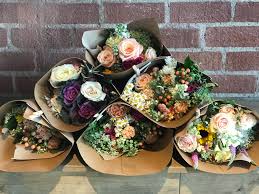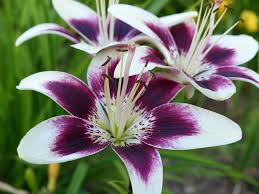Significance and Uses of House for Flowers
Flowers are the delicate wonders of nature, captivating us with their vibrant colors, sweet fragrances, and graceful forms. To truly appreciate their beauty, many enthusiasts have embraced the concept of flower houses, where these botanical treasures can thrive in an enchanting and carefully crafted environment. Let us embark on a journey into the world of flower housing, where we explore the art of creating ideal homes for these natural gems.
Flower houses, also known as greenhouses or conservatories, offer a haven for flowers to flourish, shielding them from harsh weather conditions while providing an optimal growing environment. These structures come in various sizes and designs, ranging from small garden enclosures to grand glass buildings, each tailored to meet the specific needs of the floral inhabitants.
One of the primary benefits of flower houses is the ability to control the climate within. With careful management of temperature, humidity, and ventilation, flower enthusiasts can simulate the ideal conditions for their beloved plants to grow and bloom year-round. This controlled environment extends the flowering season, allowing for an extended period of enjoyment and appreciation.
The design of a flower house plays a vital role in creating a harmonious and nurturing space for plants. Large windows or glass panels allow ample sunlight to filter through, providing plants with the essential energy they need for photosynthesis. This abundant natural light fosters healthy growth and enhances the vibrant hues of the flowers, creating a mesmerizing display of nature’s palette.
Furthermore, the interior layout of a flower house is carefully planned to maximize space utilization and promote optimal airflow. Strategic placement of plants ensures they receive sufficient access to light and airflow, preventing issues such as overcrowding or shading. Additionally, dedicated shelves, hanging baskets, and trellises provide ample space for climbing vines and trailing flowers, adding layers of visual interest to the floral haven.
Watering and irrigation systems are also an integral part of flower houses. Efficient mechanisms such as drip irrigation or misting systems deliver water directly to the roots, preventing wastage and minimizing the risk of overwatering. Automated systems can be implemented to ensure consistent watering schedules, allowing flower enthusiasts to tend to their blossoms even when they are away.
The benefits of flower houses extend beyond the well-being of the flowers themselves. These magical spaces offer a sanctuary for relaxation, reflection, and connection with nature. Stepping into a flower house is akin to entering a tranquil oasis, where the stresses of daily life melt away, and a sense of peace and serenity prevails. The intoxicating scents and gentle rustling of leaves create an ambiance that soothes the soul and rejuvenates the spirit.
Moreover, flower houses provide an educational platform for botany enthusiasts of all ages. They offer a space for experimentation, enabling plant lovers to explore different species, propagation techniques, and gardening methods. Through the art of flower housing, individuals can deepen their understanding of nature’s intricate beauty and contribute to the preservation and conservation of floral diversity.
In addition, flower houses are more than mere structures; they are artistic sanctuaries where nature’s delicate blossoms can thrive, bringing joy, tranquility, and knowledge to those who create and enjoy them. Whether it’s a small greenhouse nestled in a backyard garden or an extravagant conservatory that stretches for acres, these enchanting abodes celebrate the magnificence of flowers and provide a haven for their growth and splendor. So, let us embrace the beauty of flower housing and immerse ourselves in the captivating world of botanical wonder.
Read Also: How to determine if the Oxygen Level of the water in your Fish Pond is enough
Uses/Importance of Flower Housing

The uses and importance of flower houses, or greenhouses/conservatories, are numerous and far-reaching. Let’s go deeper into some of the key benefits they offer:
1. Extended Growing Season: Flower houses enable gardeners and flower enthusiasts to extend the growing season for their favorite blooms. By creating a controlled environment, these structures protect plants from adverse weather conditions such as frost, excessive heat, or heavy rain, allowing flowers to thrive beyond their natural season.
2. Protection from Pests and Diseases: Flower houses act as a shield against common pests and diseases that can harm delicate flowers. The enclosed space provides a barrier, minimizing the risk of infestation and reducing the need for harmful pesticides or chemical interventions.
3. Climate Control: The ability to regulate temperature, humidity, and ventilation within flower houses is crucial for the optimal growth of flowers. By fine-tuning these factors, gardeners can create an ideal microclimate that suits the specific needs of their plants, ensuring healthy development and abundant blooming.
4. Ideal Light Conditions: Flower houses provide ample access to natural sunlight, allowing plants to receive the right amount of light for photosynthesis. The transparent walls or windows of the structure allow sunlight to penetrate evenly, promoting healthy foliage growth, vibrant flower colors, and sturdy stems.
5. Experimentation and Variety: Flower houses offer a space for experimentation and exploration of different plant varieties. Gardeners can cultivate a wide range of flowers, including exotic or rare species that may be challenging to grow in their local climate. This promotes biodiversity and expands the repertoire of floral displays.
6. Improved Crop Yields: Flower houses are not only advantageous for individual flower enthusiasts but also for commercial flower growers. By providing an optimized environment for cultivation, these structures enhance crop yields and quality, contributing to the floral industry and ensuring a steady supply of fresh blooms for markets and events.
7. Education and Research: Flower houses serve as living laboratories, facilitating botanical research and education. They provide an opportunity for students, researchers, and horticulturists to study plant growth, propagation techniques, and environmental impacts. This knowledge contributes to the advancement of horticultural practices, conservation efforts, and the development of new floral varieties.
8. Therapeutic and Aesthetic Value: The enchanting atmosphere of a flower house has therapeutic benefits for individuals seeking solace and stress relief. Being surrounded by the beauty and fragrance of flowers uplifts the mood, improves mental well-being, and fosters a sense of connection with nature. Additionally, flower houses serve as picturesque settings for events, weddings, and photography, creating captivating backdrops and memorable experiences.
9. Conservation and Preservation: Flower houses play a role in the conservation and preservation of endangered or rare plant species. By cultivating and nurturing these plants within controlled environments, flower enthusiasts contribute to their survival, ensuring their genetic diversity for future generations.
10. Sustainable Gardening Practices: Flower houses allow for efficient water usage, as watering systems can be optimized to minimize waste. Additionally, by avoiding the use of harmful chemicals and promoting organic gardening methods, flower houses support sustainable and eco-friendly practices.
In essence, flower houses offer a myriad of uses and hold significant importance for individuals, communities, and industries alike. From providing a haven for delicate blooms to advancing research and education, these structures allow us to immerse ourselves in the wonders of nature while preserving and celebrating the beauty of flowers.
Read Also: The Concept of Animal Production
Types of House for Flowers

Flower houses, also known as greenhouses or conservatories, come in various types, each designed to cater to specific gardening needs and preferences. Below are some common types of flower houses:
1. Traditional Greenhouses: These are the most common type of flower houses, typically constructed with aluminum or galvanized steel frames and covered with glass or polycarbonate panels. Traditional greenhouses offer excellent light transmission and insulation, creating a stable and controlled environment for year-round flower cultivation.
2. Lean-to Greenhouses: Lean-to greenhouses are attached to an existing building or structure, such as a house or a wall, on one side. This design maximizes space utilization and provides added insulation by sharing a wall with another building. Lean-to greenhouses are ideal for limited garden spaces and offer convenient access to utilities and facilities from the main building.
3. Hoop Houses: Hoop houses, also known as polytunnels, are simple and cost-effective flower houses with a rounded frame made of hoops, usually constructed with galvanized steel or PVC pipes. They are covered with a single layer of greenhouse plastic. Hoop houses provide protection from weather elements and pests while allowing for easy ventilation and mobility if needed.
4. Gothic Arch Greenhouses: These flower houses feature a high-pitched roof design with a curved shape, resembling a gothic arch. This unique design allows for better snow shedding and improved air circulation, making them suitable for areas with harsh weather conditions. They are often chosen for their aesthetic appeal and structural stability.
5. A-frame Greenhouses: A-frame greenhouses have a distinctive roof design that resembles the letter “A.” They are compact, space-saving structures that provide ample height for taller plants while still offering good light transmission and ventilation. A-frame greenhouses are popular choices for smaller gardens or backyard settings.
6. Dome Greenhouses: Dome greenhouses feature a spherical or geodesic dome shape, offering a unique and futuristic appearance. The dome design enhances structural strength and stability, making them suitable for extreme weather conditions. Dome greenhouses provide a spacious interior and an aesthetically pleasing environment for growing flowers.
7. Glasshouses: Glasshouses are large, sophisticated flower houses made primarily of glass walls and roofs. They provide the ultimate light transmission and create a luxurious and elegant space for growing exquisite flowers. Glasshouses often require careful temperature regulation and are commonly found in botanical gardens, high-end estates, and research facilities.
8. Attached Solariums: Similar to lean-to greenhouses, attached solariums are designed to extend from an existing structure, such as a house or conservatory. These flower houses feature large glass panels to capture solar heat, making them suitable for creating warm and sunlit environments for tropical or heat-loving flowers.
9. Miniature Terrariums: Terrariums are miniature, enclosed glass containers that act as small-scale flower houses for individual plants or small floral arrangements. They are easy to maintain and add a touch of natural beauty to interior spaces, making them popular choices for indoor gardening enthusiasts.
10. Seasonal Tunnels: Seasonal tunnels are temporary structures designed for specific growing seasons. They can be easily assembled and disassembled, providing a practical solution for extending the growing season during critical periods while being cost-effective and versatile.
Each type of flower house has its unique advantages and is suitable for different gardening purposes. Whether it’s a small-scale terrarium or an expansive glasshouse, flower houses offer a myriad of choices to cater to the diverse needs and preferences of flower enthusiasts and gardeners alike.
Read Also: Benefits of Yakult Drink









